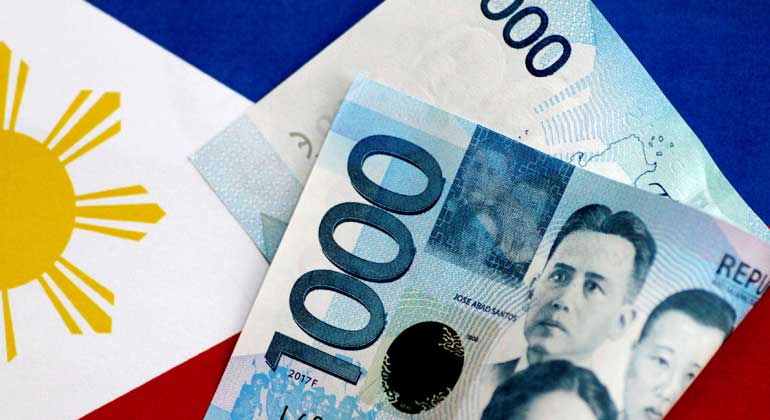PHL to submit first report to FATF in September

By Luz Wendy T. Noble, Reporter
THE PHILIPPINES is hoping it will be able to convince the Financial Action Task Force (FATF) that it is effectively implementing laws against money laundering and counter-terrorism financing in order to avoid possible countermeasures as a result of its inclusion in the latter’s “gray list.”
Anti-Money Laundering Council (AMLC) Executive Director Mel Georgie B. Racela said the Philippines will be submitting its first progress report to the FATF in September. The Philippines is being required to submit progress reports thrice a year.
“The reports will contain the Philippines’ progress in implementing the International Co-operation Review Group (ICRG) action plans, which are to be addressed within the timelines given. These progress reports will be submitted every January, May, and September,” he said in a Viber message on Saturday.
“Adopting compliant laws and regulations is not sufficient. The country would need time to implement them to demonstrate effectiveness [of anti-money laundering and counter-terrorism financing measures],” Mr. Racela added.
The FATF on Friday added the Philippines to a gray list or jurisdictions that will be subjected to increased monitoring to ensure progress is done in implementing stricter anti-money laundering and counter-terrorist financing (AML/CTF) rules.
“When the FATF places a jurisdiction under increased monitoring, it means the country has committed to resolve swiftly the identified strategic deficiencies within agreed timeframes and is subject to increased monitoring,” the Paris-based global “dirty money” watchdog said in a statement.
Mr. Racela said the country is given a timeline to address the points included in the FATF’s action plan, which are confidential, within 12 to 18 months.
“But since we will be reporting three times a year, we can always invoke effective implementation once we are ready,” the AMLC official said.
In particular, the FATF will assess the effectivity of the supervision of new covered persons including real estate developers and operators; use of controls to mitigate risks from casino junkers or travels for prominent players; regulations for money service businesses; and ensure accuracy of beneficial ownership information and its availability to law enforcement agencies, among others.
The country’s handling of counter-terrorism financing cases in terms of identification, investigation, and prosecution will also be monitored. The Philippines will also have to monitor nonprofit sector activities to ensure they operate within framework against terrorism and proliferation financing.
While the Philippines is now under the gray list, the AMLC said it will not yet be subjected to countermeasures from the FATF. “It is only when the country fails to meet the deadlines will the FATF call on countries to impose countermeasures against the Philippines,” AMLC said on Saturday.
The Philippines was blacklisted by the FATF in 2000 due to its failure to address money laundering issues. This led to the passage of Republic Act 9160 or the Anti-Money Laundering Act (AMLA) in 2001, as well as the subsequent amendment of the same law in 2003. The Philippines was removed from the FATF’s blacklist in February 2005.
Sen. Grace S. Poe-Llamanzares, who chairs the Committee on Banks and Financial Intermediaries, said the action plans identified by the FATF do not necessitate further action from Congress.
“What remains are issues centered on implementation which are operational in nature… We trust that the AMLC and other agencies can resolve the remaining deficiencies within the FATF deadlines so that we can soon get out of the gray list,” she said via Viber.
Quirino Rep. and House Committee on Banks and Financial Intermediaries Chairperson Junie E. Cua noted they have already integrated FATF recommendations such as including tax evasion cases above P25 million as a predicate crime and adding real estate brokers and developers as covered persons under Republic Act 11521.
“The latest measure that we need to pass is allowing the BSP to look into bank accounts of bank officials, directors, executives, and employees, and related persons if there’s sufficient ground to believe that fraud is committed, subject to the approval of the Monetary Board. That will contribute to that issue [on beneficial ownership], but it’s not part of the original recommendations,” he said in a phone call.
Mr. Cua authored House Bill 8991, which is still pending at the committee level.
The Philippines’ gray-listing puts more pressure on the government to ramp up its fight against money laundering and counter-terrorist financing.
“It puts pressure on the government to take action on our laws, particularly, to relax the bank secrecy law. Unless proper measures are implemented, the country may become a haven for money launderers,” Colegio de San Juan de Letran Graduate School Dean Emmanuel J. Lopez said in a Viber message.
A joint assessment report by the International Monetary Fund and the World Bank in April flagged the country’s strict bank secrecy law.
Meanwhile, industry stakeholders are hopeful that the government will be able to show sufficient progress for the country to be able to exit the gray list.
The Bankers Association of the Philippines said it is optimistic that the Philippines will be taken off the gray list “in due time.”
“I am hopeful that all government agencies involved will deliver expected outputs on the action plans pertaining to them, so that countermeasures will not be imposed on the Philippines. The government should ensure that they meet the deadlines,” Chamber of Thrift Banks Executive Director Suzanne I. Felix said in an e-mail on Sunday.
To recall, Republic Act 11521 which tightened the country’s anti-money laundering law was legislated into law by Jan. 29, only days ahead of the Feb. 1 deadline set by the FATF for the country to show tangible progress that it has imposed tighter AML/CTF.
Meanwhile, Republic Act 11479 or the controversial Anti-Terror Act of 2020 was legislated to boost measures against terrorism and proliferation financing in July last year.
The AMLC in May reported that suspicious transaction reports could hit 1.2 million in 2021 and 1.8 million by 2022. Suspicious transaction reports submitted by covered institutions reached 1.01 million in 2020, higher by 63% from a year earlier.



